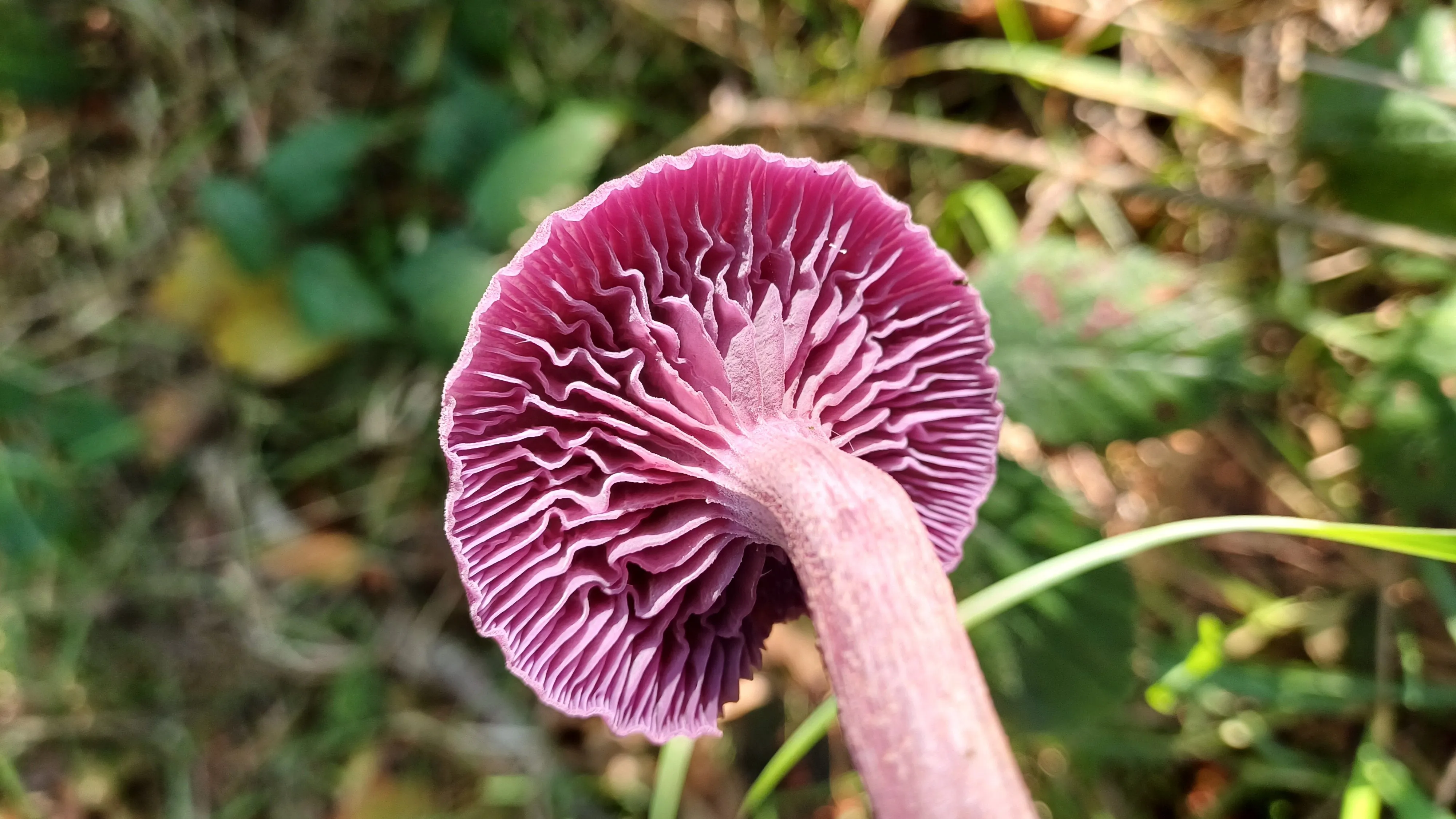The Herbal Infusion Revolution: Transform Your Health with the Power of Teas
🌿🍵 Embracing Nature's Brew: The Bountiful Benefits of Drinking Herbal Teas from Your Garden and Wild Weeds 🌸✨
🌐🍵 In a world where health-conscious choices are on the rise, a delightful trend is brewing – crafting herbal teas from your garden and wild herbs, often labelled as weeds. Beyond their refreshing aroma and soothing flavours, these homegrown elixirs pack a surprising punch of health benefits. Let's uncover the wellness wonders that accompany sipping teas brewed from your backyard and those wild herbs commonly overlooked. ☕🌱
👇📸 Dandelion roots pictured below.

🍵 Winter Wellness Delight 🌿
As the winter chill sets in, why not unlock the magic of your herbal tea medicinal cabinet? Indulge in the rich flavours and fragrances of dried leaves and flowers, reminiscent of sun-soaked days in your garden. These herbal infusions not only revive cherished memories but also offer a gentle boost to your immune system.
👇📸 Cowslip, Viola & Pansy pictured below.

👇📸 My Herbal Medicinal Cabinet pictured below.

And the goodness doesn't stop there! Transform your self-care routine with sensual herbal baths, turning your winter evenings into moments of relaxation and rejuvenation. Embrace the therapeutic power of nature as you sip and soak, letting the aromatic herbs weave a tapestry of well-being.
Cheers to a winter filled with warmth, memories, and the soothing embrace of herbal delights! 🌬️🌿✨
👇📸 Happy Days with rose petals and lilac pictured below.


🌿🌸🍵 1. A Symphony of Freshness: Garden-Grown Goodness
There's an undeniable joy in plucking fresh herbs straight from your garden to create a comforting cup of tea. Herbs like mint, chamomile, and lavender not only add a burst of flavour but also boast medicinal properties. The act of cultivating and harvesting your own herbs connects you to the earth, promoting mindfulness and reducing stress. 🌱
🍵🌿💎 2. Purity in Every Sip: Wild Weeds as Herbal Gems
What you might consider as pesky weeds in your backyard could actually be hidden herbal treasures. Dandelion, nettle, and chickweed, often dismissed as nuisances, are loaded with health benefits. Dandelion tea, for instance, supports liver health, while nettle tea provides a rich source of nutrients like iron and antioxidants. Embracing these wild herbs not only reduces garden waste but also invites a new level of sustainability into your lifestyle. 🌱
👇📸 Stinging Nettles pictured below.

☕🌿🔑 3. Nature's Medicine Cabinet: Herbal Teas for Health
Beyond the delicious taste, herbal teas offer a range of health benefits. From soothing digestive issues to promoting better sleep, each herb carries its unique set of advantages. Explore the calming effects of cowslip, the immune-boosting properties of elderflowers, or the anti-inflammatory benefits of rose petals. Your garden and wild herbs might just be the key to a healthier, happier you. 🌱
☕🌿🎨 4. Personalised Blends: Tailoring Teas to Your Taste and Needs
One of the most exciting aspects of crafting herbal teas from your garden and wild herbs is the ability to personalise your blends. Experiment with combinations that suit your taste buds and cater to your specific health goals. The possibilities are endless, allowing you to create a beverage that is as unique as you are. 🌱

☕🌿🌎 5. Environmental Harmony: Nurturing Nature as You Sip
By embracing the concept of garden-to-teacup and foraging for wild herbs, you not only reap the benefits of fresh, natural ingredients but also contribute to environmental sustainability. Reduce your carbon footprint by sourcing herbs locally, minimizing packaging waste, and appreciating the abundance that nature provides. 🌱
🌿🍵🤔 Alrighty, Lucie, spill the herbal teas! What have you been up to?
🥁✨ Drum Rolls, Please!!!!

🤔🔍 Shall we check one by one?


1. Lilac Tea - Packed with antioxidants, lilac tea may contribute to improved digestion and stress relief, making it a delightful addition to your wellness routine.


2. Oxidised Lilac Tea - known for its deep, robust flavour. This tea may support heart health and provide a calming, aromatic escape, making it an exquisite choice for both connoisseurs and wellness enthusiasts.


3. Viola/Pansy Tea - Packed with antioxidants, this floral infusion may contribute to skin health and immune support, offering a delightful and nourishing addition to your tea repertoire.



4. Heather Tea - Rich in antioxidants, may promote relaxation and aid in respiratory health, making it a delightful and soothing choice for tea enthusiasts seeking natural well-being.


🌿🔬 Health benefits: Scientific research reveals the antioxidant and anti-rheumatic effects of heather. In folk medicine, it is used as an antiseptic and antibacterial agent. Additionally, it can be used as a diuretic and expectorant substance. Heather, in combination with other plants, is used for menstrual and menopausal ailments, as well as to improve blood circulation. 🩸
🛁 It is very effective to use Heather while bathing when using a highly concentrated infusion. This helps to strengthen connective tissue and relax muscles in chronic diseases, e.g., rheumatism and gout.
☕️💆♀️💤 The cup of Heather tea has a calming effect, reduces nervous tension, which helps with physical and mental exhaustion, depression, insomnia, and irritability.
🏡✨ I'm sure most of you might have Heather in your garden. 🌿

5. Common Hogweed Seeds Tea - Packed with essential nutrients, these seeds may offer digestive support and contribute to overall well-being.
🌿 Hogweed Seeds, they resemble a sort of cardamom. I managed to get quite a few this year, and I was going to use them in cooking. However, I found out I am quite lazy to put them in cheesecloth to stop mixing them with the food while cooking. Alternatively, just take them out from the food after cooking. I was thinking, "Oh my gosh, I've done so much gathering; why don't I use it??!!!" And I found out it makes such an excellent tea. So, if you like cardamom, this sort of resembles its flavour, and you can make a nice hot milk with it too. ☕🌾
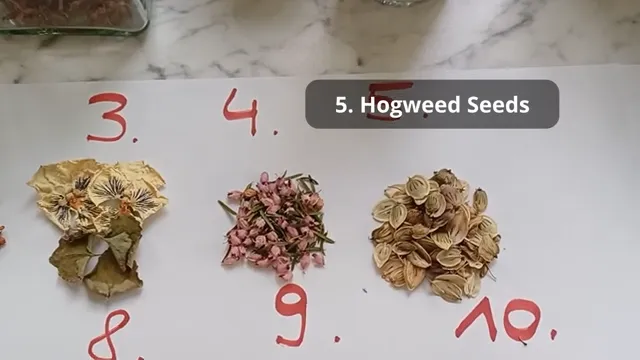


6. Roasted Dandelion Root Tea - Celebrated for its potential as a liver cleanser, this herbal infusion may support detoxification and digestion, offering a robust and healthful addition to your daily routine.


🌿 This is my favourite: roasted dandelion root, and my first year I did it when I was actually doing some weeding. I am really glad I did it! You can use it as a coffee substitute. I don't really drink coffee, so I can't comment on this, but as a non-coffee drinker, I love the flavour. ☕😊

7. Linden/Lime Tea - Renowned for its calming properties, linden tea may aid in stress reduction and promote a restful sleep, making it a delightful and soothing choice for those seeking tranquillity in their daily routine.
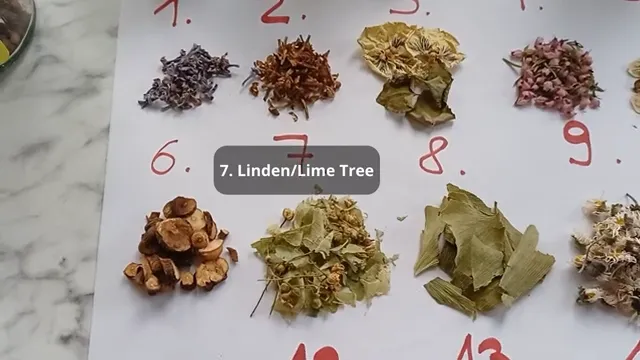
🥂 My glass seems to be empty! 🤣 As you can see, it was another one of my favourites. 🍹


8. Gingko Tea - With its potential to enhance memory and support mental clarity, Ginkgo tea is a refreshing and invigorating brew that may contribute to overall cognitive well-being, offering a natural boost to your daily routine.

If you need to learn something, it really helps you with the learning process, and it works well with your memory. 🧠✨


9. Daisy Tea - Renowned for its antioxidant properties, daisy tea is not only a soothing infusion but also believed to act as a blood purifier.



🌼❤️ This is special to me because it was a gift from my lovely friend (below) who handpicked those flowers for me from her garden, and I am really grateful for this!
🧳✈️ She knows I have only a few daisies in my garden, and I can't take heavy gifts back to England due to luggage allowance. When I saw a big bag of dried daisies, my heart skipped a beat!
☕🌿I wanted them for one of my recipes where you combine sundried tomatoes, daisies, and olives together and let it infuse. Well, I found out I really like daisy tea, and as you can see from the picture above, I don't have much left now. I'd rather hurry up with the recipe!!!

10. Mullein Tea - Known for its respiratory and anti-inflammatory benefits, mullein tea may provide relief for coughs and promote respiratory health, offering a comforting and soothing addition to your wellness routine.

💛🌱 There is something special about this beauty. It was considered an almost omnipotent cure, and I truly have a big respect for this medicinal plant.

🌻🌿 We still have until the end of the summer to dry the golden mullein flower, which will certainly come in handy in the autumn and winter months. It will remind us not only of the missing warm rays of the sun but, above all, will help us with a number of difficulties that affect us at this time of year. Bees go absolutely crazy after mullein!
🍯💛 My favourite are the flowers, and I also made some infused oil and use it. It's an antibacterial, so a wonderful one, and it's got a really pleasant smell.

11. Rosehip Tea - Packed with vitamin C and antioxidants, rosehip tea may boost immune health and enhance skin vitality, providing a delicious and nourishing addition to your daily tea ritual.
😲🌹 Oh wow! 11, 12, and 13, this is something special! The WOW goes to rose! It gives you an idea of what one plant can do for you. 🌿💖



12. Rose Petals Tea - Known for its calming properties and potential skin benefits, this floral infusion offers a delightful way to relax and promote a radiant, healthy glow, making it a lovely addition to your self-care routine.


🌹🍵🩸 Ladies, it’s time to embrace the soothing powers of rose tea during that dreaded time of the month. Say goodbye to those pesky cramps and menstrual discomfort.
🌺💆 Traditional medicinal practices have utilised rose tea for its potential to alleviate menstrual cramps and discomfort. 🌿✨
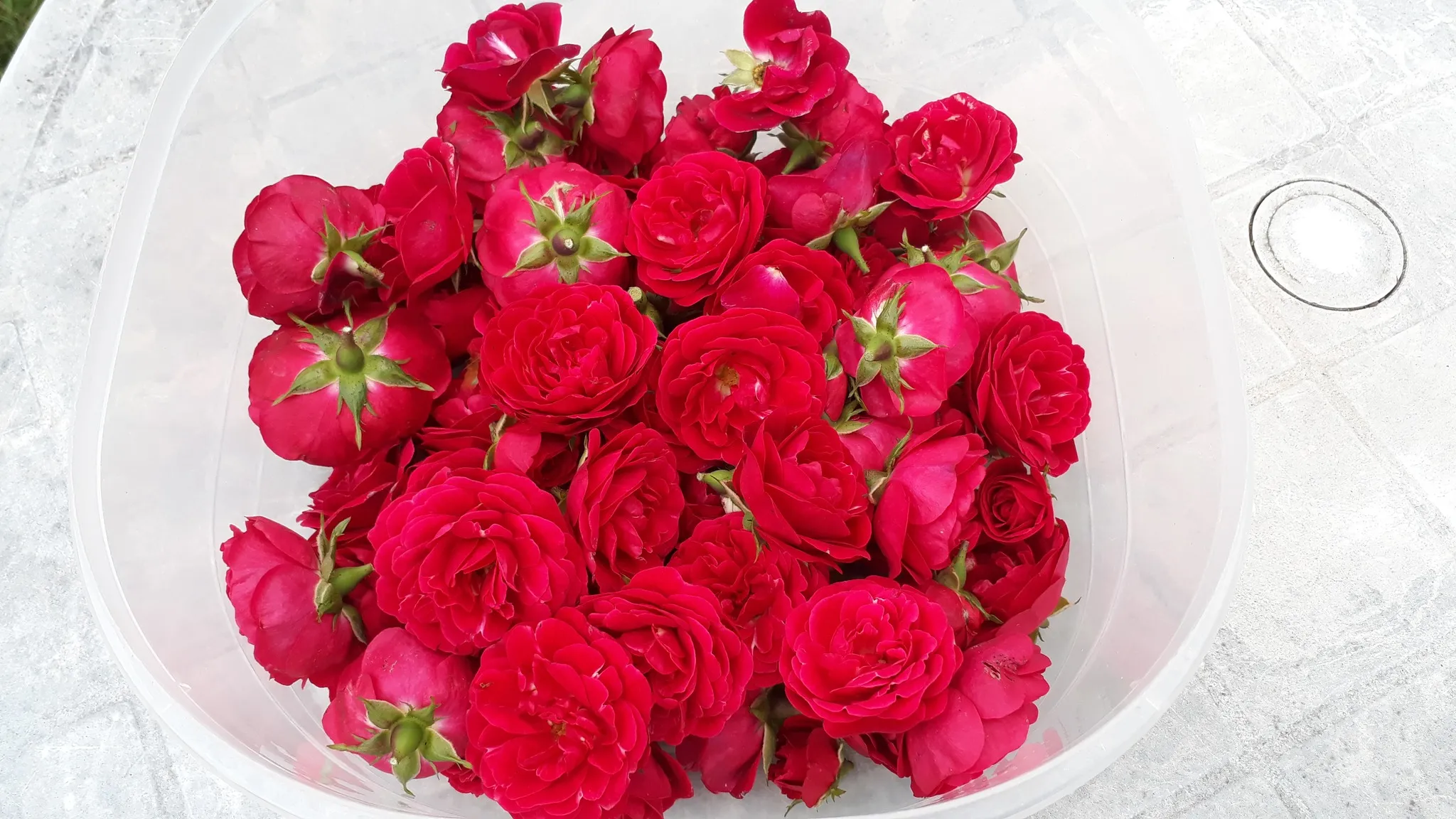
🌹💖 Rose petals and their medicine help to move and open a heart which has tightened emotionally and spiritually.
🌿✨ A wonderful nervine, great for uplifting the mood and alleviating depression, rose also has antispasmodic, aphrodisiac, and sedative qualities, as well as being anti-inflammatory. Rose helps regulate menstruation as well as stimulate digestion.
🛁💆♀️I really love a bath with rose petals and was glad to find out they have sedative qualities. It makes sense to me now!
🌸🍯 This year I really enjoyed lilac-infused honey; it was a blissful treat!
❄️🌹Next year, I think I'll try one with rose petals as well to have more bliss in my life during the winter months.

13. Roasted Rose Branches Tea - 🌹☕️✨ Accidentally Discovered: Roasted Rose Branches Tea! 🍵🌿
Guess what???!!! 🌹 This tea is made from rose branches, and I stumbled upon it accidentally. 🤔🍃 You might be thinking, "What on earth???!!!" Yes, exactly!!!! 😲 This is what I was thinking, but believe me it's wonderful.
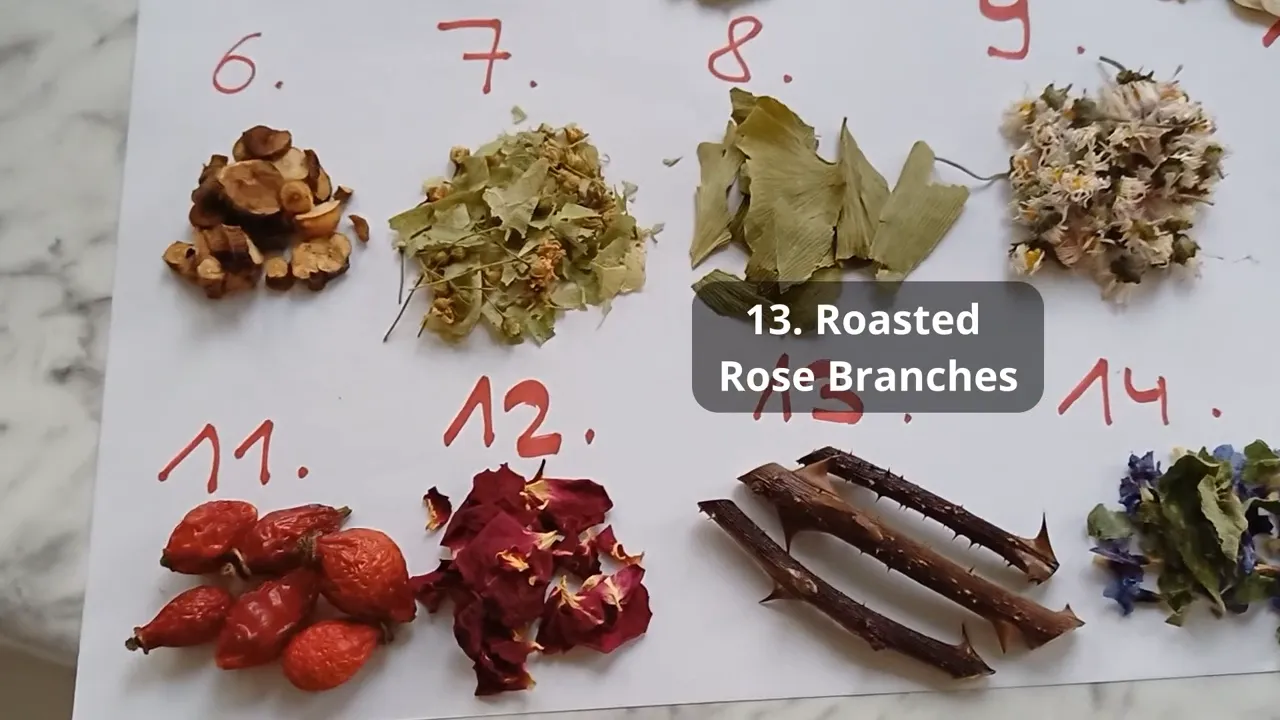

🍵✨ Celebrated for its delicate flavour and potential digestive benefits, this herbal infusion offers a soothing and aromatic way to unwind, making it a delightful addition to your tea collection.
🍵🌹 If I had to pick one "wild" drink that I've grown to love and keep coming back to, it's roasted rosehip branch tea. You can call it "twiggy" at home. It's smooth, a little smoky, and yet distinctive. Gentle, alkaline with the ability to relieve an over-acidified body when you've just eaten too much fruit or Christmas food and sweets.
🌿🚫🌍 Late autumn and early spring, when the rosehip branches are bare, is the time to pick them. Perhaps while walking or hunting for rosehips themselves. But you can also do it during winter time. Ensure that the rose branches have not been treated with harmful pesticides or chemicals and be mindful of the location where you pick them from.
✨ Picking and Preparation of Rosehip Branches ✨
🧤 Equipment: gloves, secateurs, basket, tin, pan
1. Use secateurs to cut off whole rosehip branches. I recommend thinner ones. They are easier to cut and roast, and more will fit in the jar. ✂️
2. Cut the individual sprigs into several centimetre pieces. 🌿
3. Let these dry on a tray or baking sheet. Just at room temperature, they dry well. ☀️
4. Dry roast the dried pieces in a frying pan or in the oven on a baking sheet. Beware of Teflon, the thorns of the rose hips scratch easily. 🍳🔥
5. After roasting, the twig pieces will darken slightly, with dark toasted bits appearing here and there. They also start to smell slightly sweet and rosehip-like. 🌰🌹
6. If you want to process rosehip branches all outdoors and 'wild', you can use a fire or hot coals for roasting. A cast-iron pan or tallow is best for this. The bits of ash then give the tea an extra level of smoky aroma. 🔥🏞️
7. Store the cooled roasted twigs in a jar or tin. They will last indefinitely. 🏺🔄
🙏 I was inspired by Czech lady’s blog post; Denisa aka “Divoženka v kuchyni”. All credit goes to her! She was inspired by Kamila Brotánková’s blog article. And here comes Lucie! 😂 I hope to inspire somebody else to unleash this nature treasure. And the story goes on!
🚀🍃 Feeling adventurous? Ready for a flavourful challenge? I dare you to try this!
🌿🎁🌲 Enjoy discovering and picking wild edible gifts of nature!



14. Lungwort Tea - Renowned for its traditional use in supporting lung health, this herbal infusion may offer relief for respiratory issues, making it a comforting and health-conscious choice for your daily tea enjoyment.

🌸🍃 The flowers are wonderful, and even the leaves are really nice to just grow for the foliage. It adds something cheerful to your garden. 🌿🌼



15. Elderflowers Tea - Packed with antioxidants, this aromatic infusion may contribute to immune support and respiratory health. It’s helpful for cooling down a fever and increasing circulation.


We've got a saying in Czech Republic:
🌼🙇♀️ Bow before the chamomile and kneel before the elder. 🌿✨
🕰️🌿 This only proves that its beneficial effects have been revered by people for centuries.
🍽️🌼 Last couple of years I can't go without elderflower fritters. 🌿👩🍳

16. Currant Leaves Tea – Rich in vitamin C, known for its memory-enhancing properties, hormone regulation, and immune-boosting potential.

🌿🍇 If you've got a redcurrant, blackcurrant, or white currant in your garden, springtime is a wonderful time to get some leaves. They are really high in vitamin C, so you don't have to only use the berries; you can use the leaves too. 🌞🌱


17. Ribwort Plantain Tea - Celebrated for its lung-friendly properties, this herbal infusion serves as a natural remedy, offering relief for irritated lung mucous membranes and aiding in soothing coughs and respiratory discomfort.

🤓✍️ I'm being smart – if the Czech version is shorter than the English one, I write it down in Czech. This one is called Jitrocel. 🤷♂️🇨🇿

🌿🌼 Ribwort Plantain seems to be a very versatile addition to the medicine cabinet, being an antihistamine, antifungal, antioxidant, analgesic, and even a mild antibiotic. 💊🌱

🌱🍯 This year I made Ribwort Plantain Infused Honey. I used to make it with sugar, but I wanted to do something else, so honey was my choice. 🐝✨


🌱🍯 But guess what???!!! Because I like to do things with a twist, I was searching online, and people usually place everything in a jar in layers, and the jar is then buried in soil. At least for 3 months. I couldn't find out the reason for this; everywhere is mentioned because it's a tradition!
📚🇩🇰 It reminded me of a book I read in the past, "The Year of Living Danishly." They really like traditions, and they do various things because it's a tradition! It's a matter of fact, no questions asked.
🤔 And because my name is Lucie, I had to try it for the sake of it. I might have some secret Danish relatives! lol 😂
🐔🍯 OK, I was a bit of a chicken, and I stored one big jar in my kitchen cupboard (pictured above) and buried the other two in the ground. In case something went wrong, I'd have at least one jar of infused honey. 🌳🏡
🕰️🔍 3 months later, I returned to the scene of the crime to dig it out. 🌱🚶♀️

🎉😄 Yay, it's still there in one piece! 🌱🕵️

👀🚿 Check this out! Let me give it a proper wash. 🌿💦

🚫🍃 No mould. Everything is looking very good. It looks like a success story.
🌟🎉 Yay!

🍯✨ I discarded plantain leaves and was left with pure infused honey. 🌱🗑️

🤚🍯 The one in my left hand is from the kitchen cupboard. 🏡🌟

🌿🍯 Ok, I infused honey with garden weed. It was buried in the ground for 3 months. Was this WILD enough for me???!!! You guessed it!!! The answer was NO!
❄️🌱 Shall I mix it with dried nettle seeds for a winter super booster? YES, PLEASE!!!

😊 Are you happy now?
😁 Can't you tell from my face?
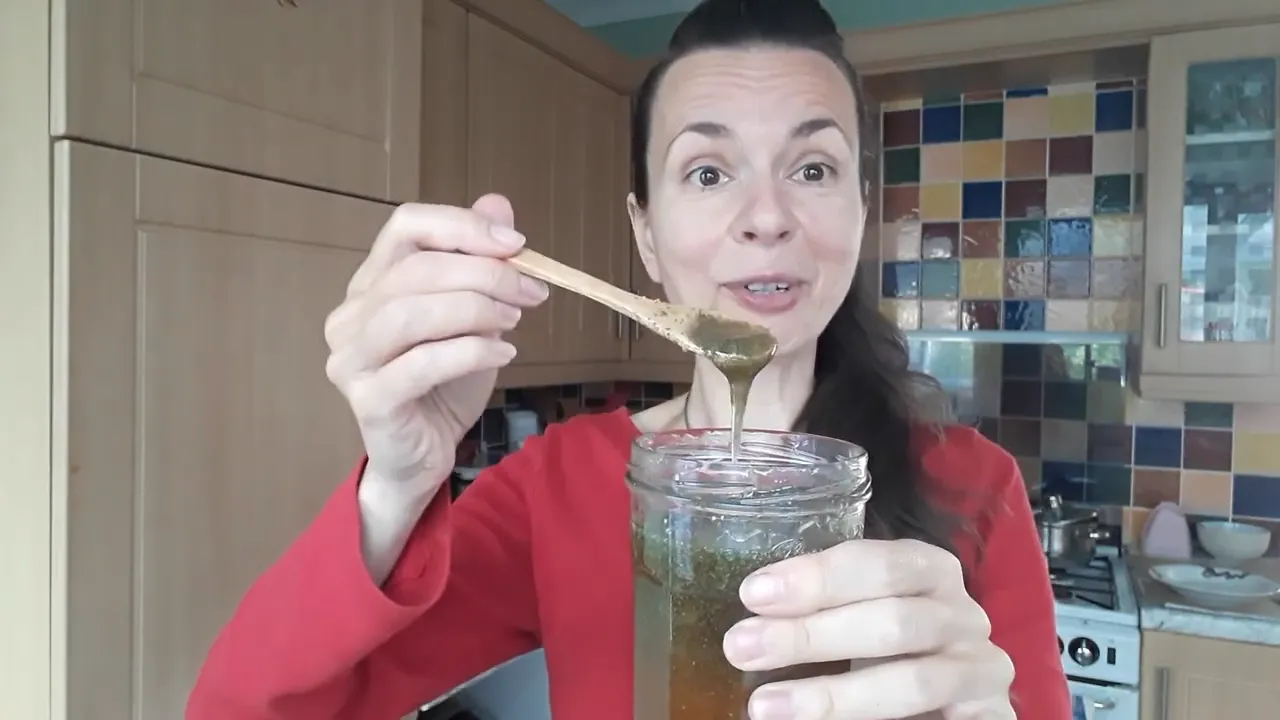
18. Cowslip Tea - Known for its ability to soothe nerves, promote relaxation, and potentially aid in managing insomnia.
💔 Formerly a common plant of traditional hay meadows, ancient woodlands, and hedgerows, the loss of these habitats has caused a serious decline in its populations, and now fields coloured bright yellow with its nodding heads are a rare sight.
💛 Hence I grow it in my garden. Once established, it will spread everywhere.



19. St John’s Wort Tea - Renowned for its potential to relieve symptoms of slightly low mood and mild anxiety, this herbal infusion offers a soothing addition to your daily routine, providing a natural remedy for emotional well-being and tranquillity.

☕🌿 Here I was at the end of the year, sipping my St. John's Wort tea after a very difficult year, whispering, please help! 🩹💚

🌿✨ I also made some St. John's Wort infused oil. It was really nice to watch the oil change colour to bright red (not visible in the picture below, as it was at the beginning of the process).
The bright red, slightly aromatic oil has a long history as a remedy and is well known to protect against all kinds of 👹 demons, including those that torment worn muscles, nerves, and bones. It can also be applied as a soothing and moisturizing 'after sun' lotion or blended into homemade skincare lotions.
🌞🛑 However, it should never be used as a pre-sun lotion as the herb has photosensitizing properties that will cause the skin to burn more easily. Cover any treated areas that may be exposed to sunlight for three hours after the application of this oil. Do not apply to open wounds.


